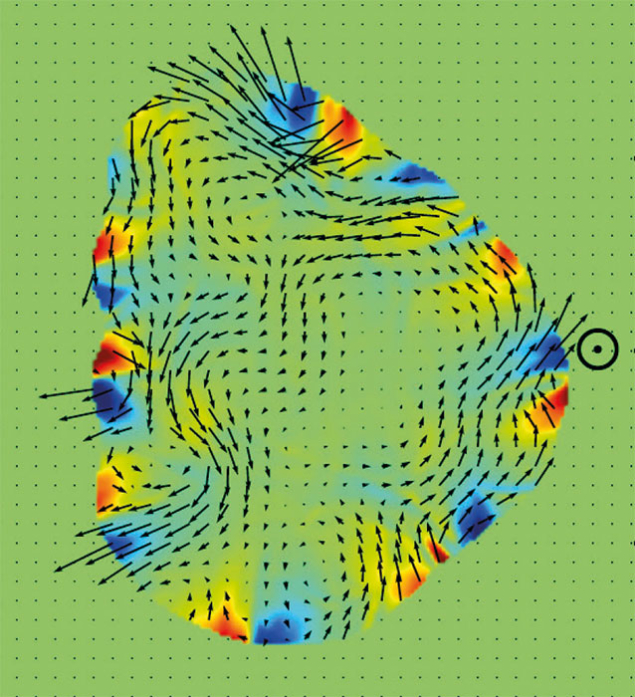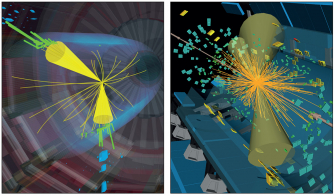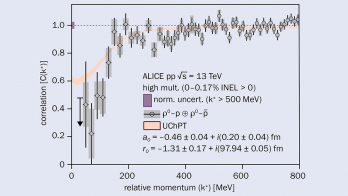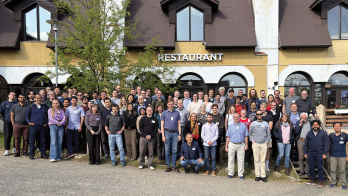
Powerful supercomputer simulations of colliding atomic nuclei have provided new insights about quark–gluon plasma (QGP), a superhot fluid of de-confined partons produced in heavy-ion collisions at the LHC and at RHIC, Brookhaven National Laboratory. Shown in the image are the transverse (arrows) and longitudinal vorticity (contour) distributions of a strongly coupled quark–gluon plasma in the transverse plane at forward spatial rapidity. The coupling between spin and local vorticity shifts the energy level of fermions, leading to different phase-space distributions for fermions with different spin states and therefore spin polarisation along the direction of the local vorticity.
The international team responsible for the work, which involved weeks of processing on a GPU cluster, suggests that longitudinal spin correlations can be used to study the vortex structure of the expanding QGP in high-energy heavy-ion collisions. Different from global transverse polarisation, the longitudinal spin correlation does not decrease with beam energy or vanish in event averages. This provides a unique opportunity to study the local fluid vorticity of the QGP at LHC energies, concludes the team. “We can think about this as opening a completely new window of looking at quark–gluon plasmas, and how to study them,” says team member Xin-Nian Wang at the Central China Normal University and Lawrence Berkeley National Laboratory.








